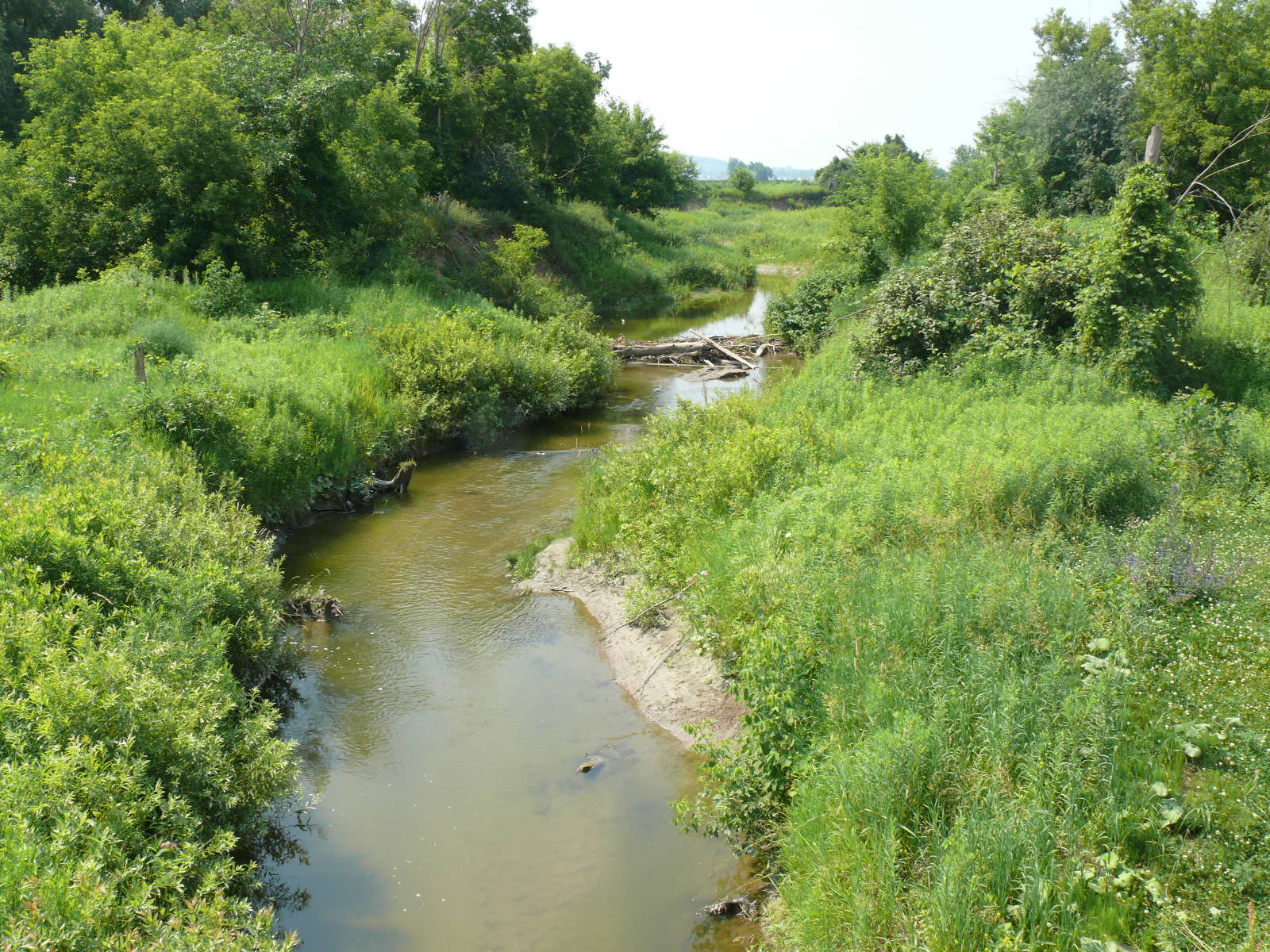Natural watercourses and drainage disputes
Understand rights and responsibilities when a natural watercourse flows through or near a property.
Introduction
Under the Common Law, a natural watercourse is defined based on the principle that water flows naturally and should be permitted to do so.
Natural watercourses
Case law defines a natural watercourse (Figure 1) as a stream of water that flows along a defined channel — with bed and banks — for a sufficient time to give it substantial existence. The flow of water does not need to be constant, but the channel must be a permanent feature on the landscape. A watercourse may spread over a level area without defined banks before flowing again in a defined channel. This can include streams that dry up periodically.
A riparian owner has property that borders a natural watercourse. A non-riparian owner does not.

Source: Tulloch Engineering, Espanola, Ontario
Only a judge can conclusively determine whether a specific flow of water is considered a natural watercourse under the law. However, there are some Common Law guidelines that can help evaluate whether a watercourse qualifies:
- The channel must be a permanent, natural feature on the land. The courts may or may not consider a modified natural watercourse to still be natural.
- Check for a defined bed and banks, even if the water spreads temporarily.
- The flow in a natural watercourse does not have to be constant, but it must be significant. If water only flows after heavy rain, it may not be considered a natural watercourse — even if it has defined banks.
Riparian rights and responsibilities
Under Common Law, riparian property owners have specific rights and responsibilities related to natural watercourses including:
- the right of drainage
- the right to use water for domestic or natural purposes
- the responsibility for any impacts caused by modifying, interfering with or damming a natural watercourse
- the responsibility to accept the water, even if flooding occurs
- no obligation to manage or maintain a natural watercourse
The law regarding riparian rights and responsibilities is complex. Consult a lawyer where these rights and responsibilities affect your property or neighbouring properties.
Right of drainage
Riparian property owners have the right to drain their land into a natural watercourse, even if it causes damage or flooding downstream. Non-riparian property owners do not have this right. If they discharge water into a natural watercourse and cause damage, they may be liable for damages.
Right to use water for domestic purposes
Riparian property owners may use water from a natural watercourse for domestic purposes, as long as the amount is reasonable. They must not take all the water, depriving downstream riparian property owners of their rights.
The Permits to Take Water process under the Ontario Water Resources Act, 1990 may override this common law principle.
Responsibility for impact of changes to a natural watercourse
Riparian property owners may modify a natural watercourse if the changes do not interfere with the principle that water flows naturally. Any interference with this principle may be grounds for a legal action.
Certain legislation (such as the Conservation Authorities Act, 1990 or the federal Fisheries Act, 1985) may require a permit prior to completing work in the natural water course.
Contact your local conservation authority, the Ministry of Natural Resources or Fisheries and Oceans Canada before starting any work in a natural watercourse.
Damming or blocking a natural watercourse is not permitted.
Responsibility of accepting the water
If water overflows a natural watercourse and floods a property, a riparian property owner must accept the impacts. However, if the flooding is caused by actions of upstream non-riparian property owners, the riparian property owner may have grounds for legal action.
Management of natural watercourses
Property owners do not have a duty to manage or maintain natural watercourses for the benefit of their neighbours.
Regulatory agencies — such as conservation authorities and Fisheries and Oceans Canada —do not have a duty to manage or maintain natural watercourses. Municipalities has no responsibility unless the natural watercourse is also a drain under the Drainage Act, 1990.
Non-riparian properties
Non-riparian property owners may be liable under common law if water collected from their land is discharged into a natural watercourse and causes flooding or damage downstream.
Water collected from one watershed must not be discharged into a natural watercourse in another watershed.